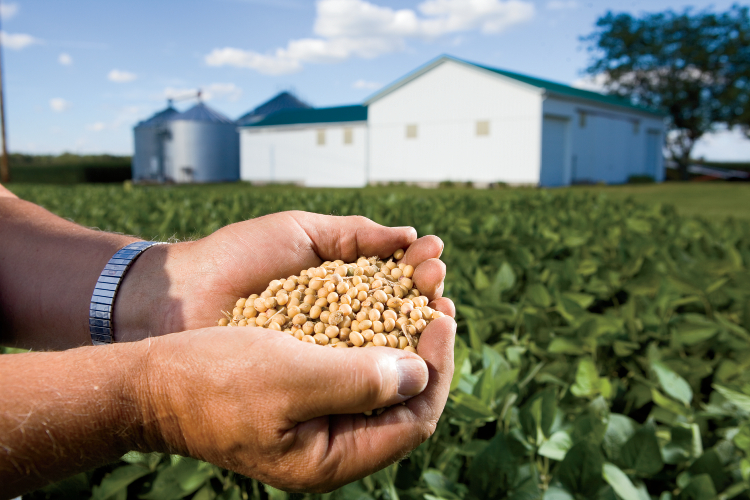Home > Ohio > Ohio Crops & Livestock > Ohio Corn and Soybean Farmers are Making Rows of Progress
Ohio Corn and Soybean Farmers are Making Rows of Progress
In partnership with: Ohio Department of Agriculture
It only takes a country drive to notice that corn and soybeans occupy a significant part of Ohio.
And in recent years, these longtime staples of the Ohio landscape have boomed at a time when the general economy slumped in a recession.
“There has been a lot of discussion over the last five to six years about the value of the agricultural economy across the United States,” says Hal Reed, chief operating officer of The Andersons Inc., a diversified agricultural company. “It’s kind of the unsung hero holding the U.S. economy above water.”
The collective value of the Ohio corn and soybean crop increased 84 percent from 2008 to 2012, based on data from the National Agricultural Statistics Service. This era has provided some of the most profitable times in row-crop production for Ohio farmers and agribusinesses.
The climb in agriculture has helped businesses like The Andersons grow. The Ohio-based company conducts business across North America in the grain, ethanol and plant nutrient sectors, railcar leasing and repair, turf and cob products, and consumer retailing.
The strength of the agricultural economy in the last few years prompted them to increase grain storage capacity and crop nutrient and protection services. The firm also expanded into ethanol production in the last decade.
“I still see a positive slope to Ohio and U.S. agriculture value,” Reed says. “I think it’s probably a little less of an upward slope than in the last few years, but still, nonetheless, an upward slope.”
Farmer Paul Herringshaw sells most of his corn to one of two plants that produce ethanol and livestock feed byproducts within 20 miles of his farm near Bowling Green, Ohio. Railcars ship some of his stored corn east and southeast for livestock feed.
On the soybean side, part of his crop enters a nearby processing plant to produce soybean meal, which is also fed to livestock. A company buys another portion of his crop to become seed soybeans to sell to farmers the next growing season.
Herringshaw grows corn, soybeans and soft red winter wheat in a rotation on about 1,500 acres. These crops fit Ohio agronomically and provide farmers a good economic return, he says.
The third-generation farmer grows corn on the same farm his grandfather did in the late 1890s. But his ancestors would be amazed at the innovations and success today.
“In the last several years during this current boom cycle, agriculture has had a tremendous impact on the economy,” he says. “We have expanded grain bins on our farm and put up a newer grain bin to handle and dry corn. A lot of my neighbors have done similar things.”
He sees farmers upgrading equipment and expanding their use of semi-trucks to haul crops.
Likewise, he witnesses expansion in employment and services at the agribusinesses he frequents. For example, more precision-farming specialists help farmers use technology to enhance field applications. Meanwhile, the increased use of grid soil sampling teamed with site-specific fertilizer application gives farmers the tools to boost crop production. At the same time, farmers further improve their care for the environment.
“We’re trying to figure out how to feed a growing population and do it in a way that makes economic sense and also is environmentally friendly,” Herringshaw says.






